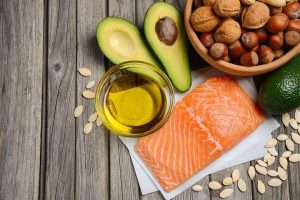
Omega-3 is the name given to a family of polyunsaturated fatty acids, which the body needs but cannot manufacture itself.The omega-3 fats come in three main forms: DHA, EPA, and ALA.ALA is found in certain nuts, seeds, and pastured animal foods like grass-fed beef and dairy.EPA and DHA are found in fatty fish like salmon, mackerel, sardines and cod liver oil

What makes Omega 3 fats so special?
They are an integral part of cell membranes throughout the body and affect the function of the cell receptors in these membranes. They provide the starting point for making hormones that regulate blood clotting, contraction and relaxation of artery walls, and inflammation. They also bind to receptors in cells that regulate genetic function.
Omega-3 deficiency symptoms can include poor memory, dry skin, heart problems, mood swings, joint pain and autoimmune disease.
Omega-3 deficiency is common in industrialized countries such as London due to our excessive consumption of Omega 6 fats. The average ratio of a standard western diet is 20:1 when it should be closer to a 2:1 ratio.
At Nuriss we offer a blood test to determine the Omega 3/Omega 6 ratio in your body so we can advise on correct supplementation.

For more information about our treatments, please email enquiries@nuriss.co.uk
